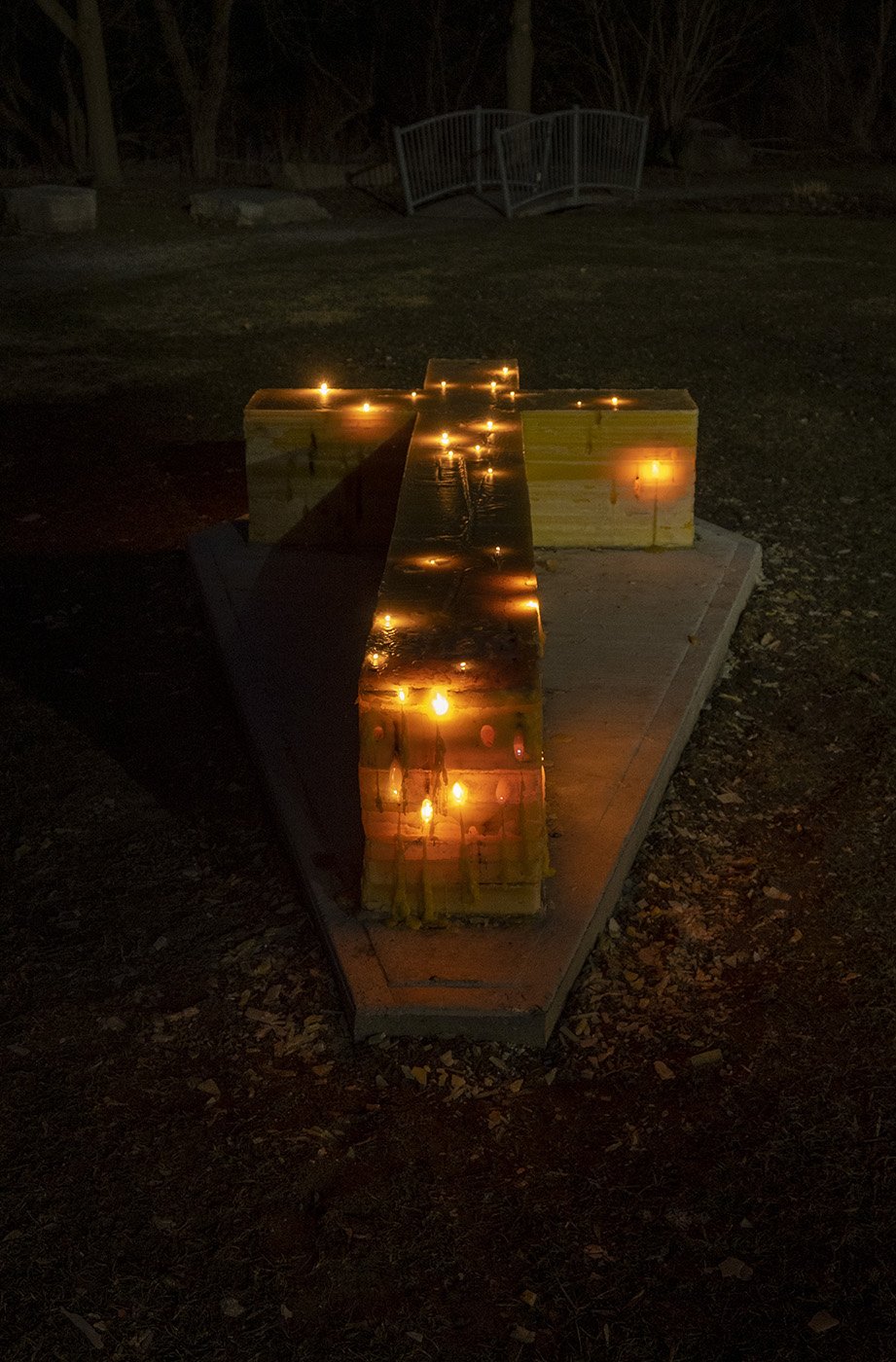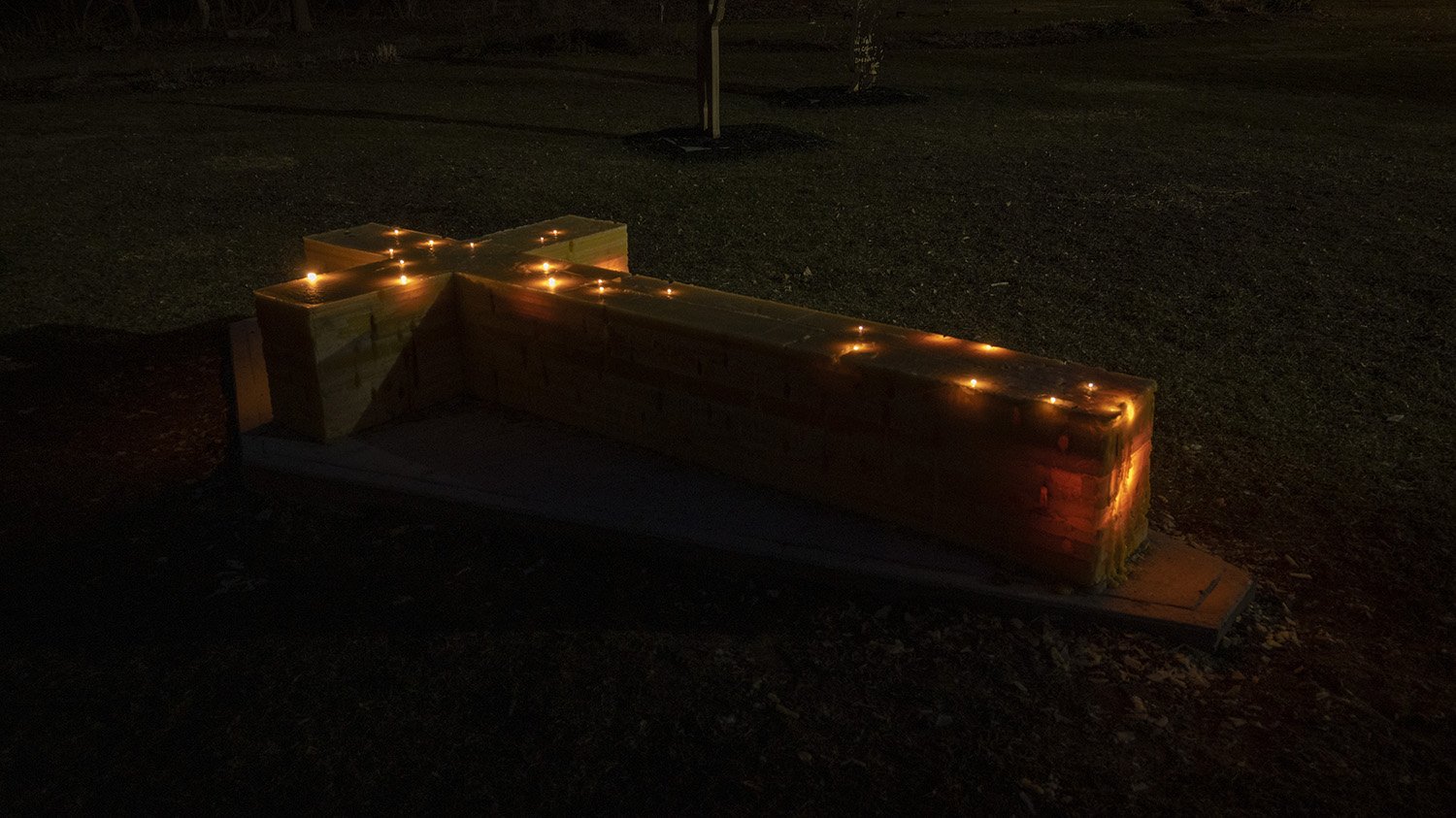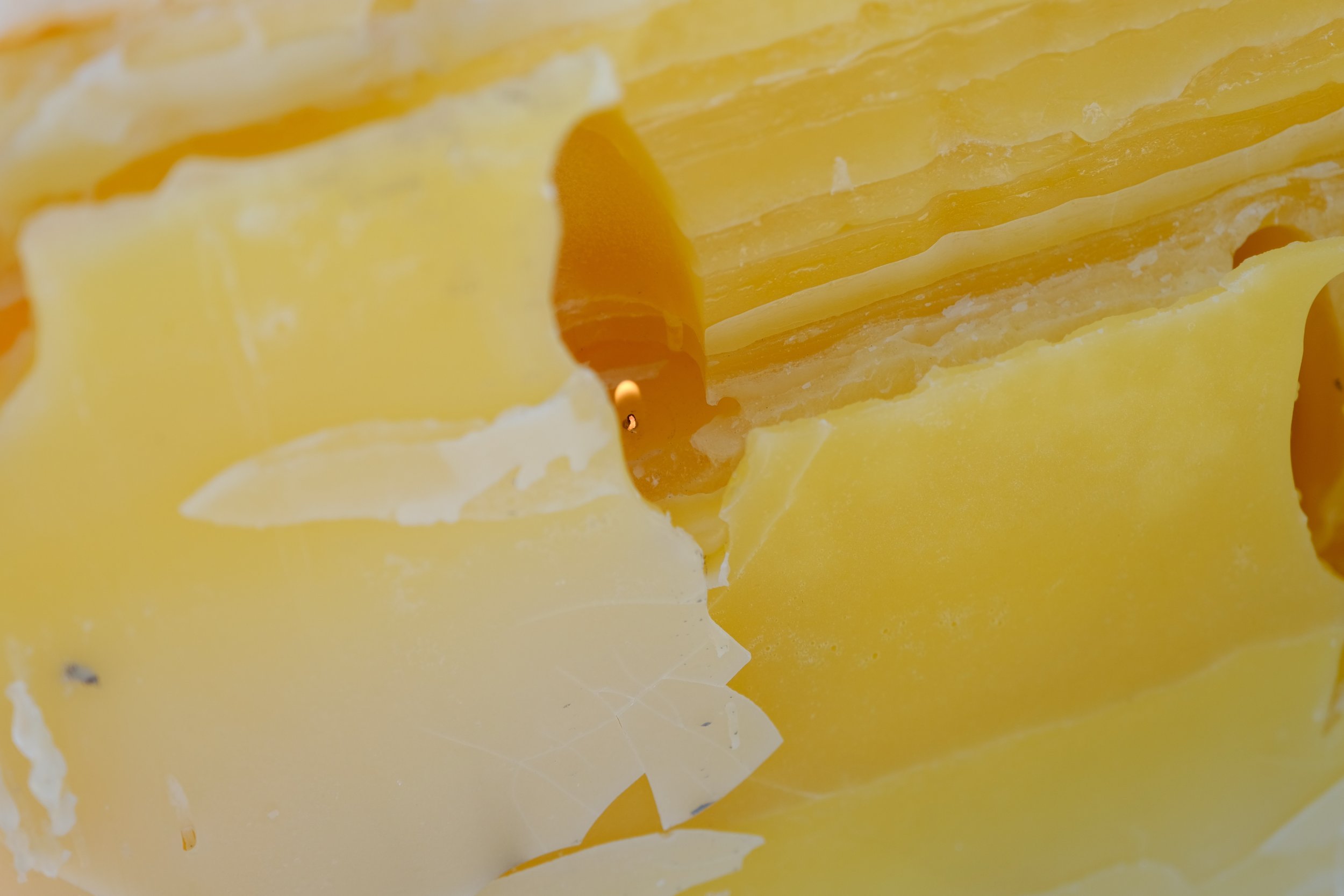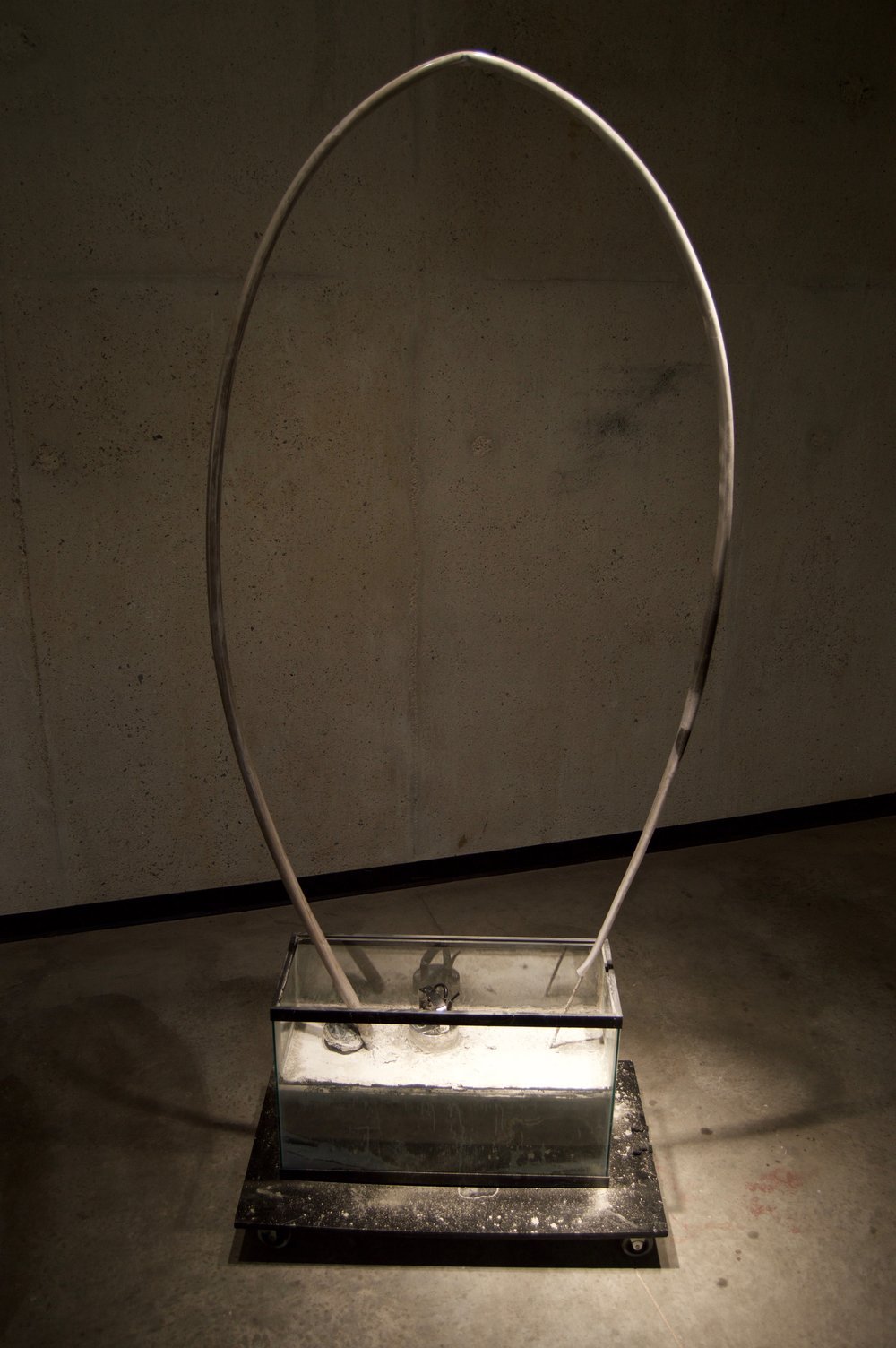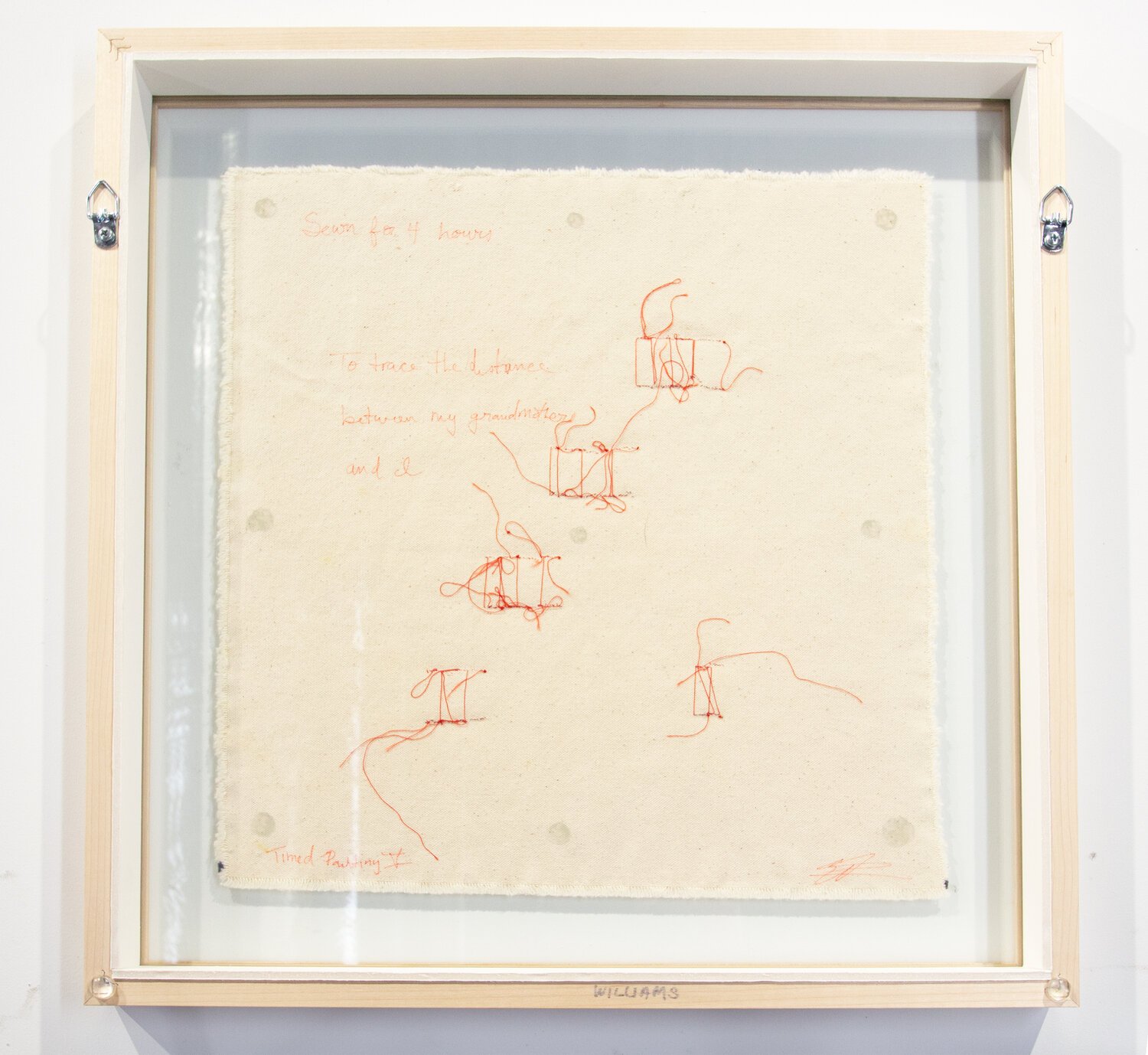Sandy Williams IV
by Yaniya Lee

Sandy Williams IV, Wax Monument IV (Free Wax), 2020, Socrates Sculpture Park, Queens, NY.
Sandy Williams IV, Planned Obsolescence I, 2016, tank water, submersible pump, steel, concrete, tubing, mobile platform.
Sandy Williams IV, Time Travel (Heartbeat) Series, 2018-2021, oil on canvas, thread (front).
Sandy Williams IV, Time Travel (Heartbeat) Series, 2018-2021, oil on canvas, thread (back).
At the Visual Arts Centre of Clarington, US artist Sandy Williams IV’s public installation Wax Monument VII (Free Wax 2.1), a massive, wick-lined wax cross, holds the potential for radical change. Like their previous wax renditions of monuments and flags, the Christian cross is a loaded symbol. This installation’s predecessor, Wax Monument IV (Free Wax) (2020), mounted at Socrates Sculpture Park in Queens, was a huge, wick-lined wax cast of the United States flag. Spectators participated in a flag burning that lasted several months. From fall through to early spring, they lit wicks that melted an emblem of empire into something barely recognizable.
Societal change can feel like it develops in an observed linearity, in a trajectory that exists in the spaces between beginning, middle and end. In their various video and installation works, Williams reveals time’s malleability—what we do does not always adhere to an observable progression. They impose constraints that pressurize and situate manifold possibilities in a single site. In the video Déjà Vu (2017), a chair hits a wall in the exact same way in the exact same spot over and over again while subtitles and a voiceover tell two different stories; in the videos of The White Balance Series (2016), Williams poses before a fully charged HD camera, and stays there, recording themselves, until each camera dies; The Exhaustion Series (2015-2018) videos show participants performing an action–dancing, jogging, treading water, breaking rocks—until they are completely exhausted, or simply don’t want to go on.
In Planned Obsolescence (2016), a submersible pump flows water and concrete through a fish tank until the whole process grinds to a stop. The stalled work is then shown along with a looped video of the procedure. Williams makes paintings too, creating units of measurement by meticulously sowing lines back and forth within the grid space of a canvas the Time Travel (Heartbeat) series (2018-2021). In each one of these works, they have found new ways to compress states of transformation.
In 2017 Williams started making recreations of American monuments in wax, a material that can change between fluid and solid states. During a monument’s stagnant collection of time, specific values and perspectives on the past grow latent, ubiquitous, untouchable. Williams leverages wax’s properties to intervene into these seemingly unalterable meanings. The wicks in their wax (re)creations make a space for us, as spectators, to step into and remake its significance.
The new, site-specific installation, Wax Monument VII (Free Wax 2.1), situates their work within a Canadian context. Rich and weighty histories are contained in the simplicity of the Christian cross’s two intersecting lines. As a symbol of religious faith, it’s supposed to hold people and take care of them. Yet, in the United States and Canada, cross-burning was long used by the Klu Klux Klan in a regime of terror, intended to assert white supremacy and suppress Black life. The KKK had a considerable, though rarely acknowledged, presence in southern Ontario at the turn of the century, and here too, they frequently burned crosses. They burned crosses in celebration, they burned crosses during initiations, and they also burned crosses to instill fear.
Williams proposes this large, wax-work cross as a proposition, rather than a closed, known quantity. They broach its standard meanings and invite viewers to participate in refashioning, to interfere in the symbol’s connotations. When you ignite the wick and light this monument aflame, it is an opportunity to undo history and alter the complicated relationship between meaning and time and transformation.







